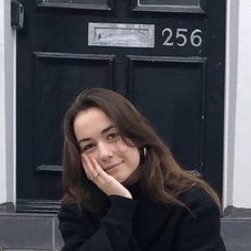The historical agricultural curse seems to weigh more than ever on the ‘Sub-Continent’ as the farmers’ protests, resulting from the Farm Bills adoption, intensify since last November. The hope of a ‘real and sustainable breakthrough’ for the sector, has vanished giving way to a drastically less utopian reality challenging the country in the economic, political, and social spheres.
Indian agricultural policy: between nationalization and liberalization
Whereas a statist system of agriculture in favor of peasants, characterized mainly by the Agricultural Produce Market Committees (APMC’s) and the minimum support price (MSP), had been established since the ‘60s, 2020 sounds like the return of further liberalization. Such an attempt initiated by the government of Narendra Modi in September was embodied by the adoption of three acts that aim to ‘accelerate growth in the sector through private sector investment in building infrastructure and supply chains for farm produce in national and global markets.’
Farmers’ party: “We’re going to lose everything.”
If, for the government, the Farm Bills would benefit them by increasing their income through increased competition, farmers fear that they will be handed over to the big corporations. More, they see such a form of liberalization as the first step towards abolishing the MSP system, the maintenance of which is one of their strongest interests.
Although the demand for a guaranteed income is not an Indian peculiarity, the real effectiveness of such a system should be questioned. Indeed, if today farmers feel betrayed by the government because of the Farm Bills being deemed ‘anti-farmers’, they might not have realized that they had already been mistreated and deceived for years. Despite subsidies, the agricultural sector, which accounts for 16% of India’s GDP and employs around 41% of the population, is doing badly. In 2019, more than 10,300 farmers took their own lives.
More than the economic issues the Farmer Act creates for the laborers, it is also its undemocratic adoption in times of sanitary crisis, which was characterized by an absence of consensus and consultation of the people of ‘the world’s largest democracy’, that has outraged farmers and sparked protests from the very beginning.
A dead-end confrontation
Determined to win this arm wrestling with the government, the farmers will not put an end to the siege of the main roads leading to the capital New Delhi that began late November until the new laws are completely repealed.
The crisis seems set to last as India’s central government refuses to fundamentally change the philosophy of its laws, devised without the farmers and imposed on them.
The situation on the outskirts of the capital worsens as repeated strikes break out, discussions with the unions are broken off, complaints against the main opposition figures have been processed by the police, and the paramilitary and police systems are increasingly reinforced.
When justice interferes
Faced with this impasse in the negotiations between the conservative government of Narendra Modi and the agricultural world, the Supreme Court ordered the suspension of the laws on 13 January.
The suspension represents a real turning point for the crisis with the involvement of the Supreme Court playing an unconventional role by intervening in support of the government.
The strategy behind this decision is probably to ensure the division of the opposition group to avoid clashes in the capital on Republic Day, which is held every year on the 26th of January.
From pacifist protest to violence and repression
Since the beginning of the protests, the movement has gained popularity and legitimacy among the Indian population and the international community not only because of its non-violent character, but also due to the wave of deaths of elderly farmers largely due to the harsh winter conditions.
The movement could lose its support given the deterioration of the protests’ forms testifying to the farmer’s weariness, determination, and above all, the imperative need for reform in the sector.
The day after the suspension of the laws deemed pro-government, the movement’s reaction crystallized in a huge auto-da-fé of copies of farm laws during the bonfires of the Festival of Lohri, dedicated to the Earth and the harvest.
The violence of the protests culminated in the events of the Republic Day on the 26th of January, which ended in bloodshed with the ‘accidental’ death of a farmer and at least 86 police officers injured.
While the authorities had allowed the rally on the condition that it would not interrupt the annual Republic Day parade in central Delhi, a few thousands of farmers protesters split from the main and “peaceful” procession, breached security, and entered the mystical Red Fort.
Challenging Indian democratic principles
The purpose of this small dissident group was to give even more echo to their cause, which in the end resulted in a regain control of the government over the events and the implementation of repression resorting to violence and calling into question the very foundations of Indian democracy.
Tear gas shots and police truncheons opposed farmers’ sticks and metal bars on January 26th, which ended in a worrying escalation of measures taken by the Indian authorities with the cutting of internet lines in some areas of Delhi, censorship of social networks, especially on Twitter, restrictions on access to places of assembly, and the use of the sedition laws against pacifist farmers to muffle their grumbling.
The Modi government under strain
“When you attack a peaceful demonstration, then the difficulties for the government are bound to increase,” stated trade union leader Kawalpreet Singh Pannu.
Already the government’s image had been put to the test on several occasions, notably because of its nationalist economic policy and the adoption of citizenship laws; this new crisis, concerning the peasants, to whom India remains very attached, seems to have pushed the authorities to the wall.
A researcher at the Center for Policy Research explains that if the government backs down now, his image of a “strong government” will suffer.
Attacked from all sides and by the international community with the tweets of influential people such as the singer Rihanna and the young activist Greta Thunberg, the government is facing a real dilemma, with a drastically reduced room for maneuver, the outcome of which will have unprecedented consequences for the future of India.
3rd year Political Economy student at KCL






0 Comments